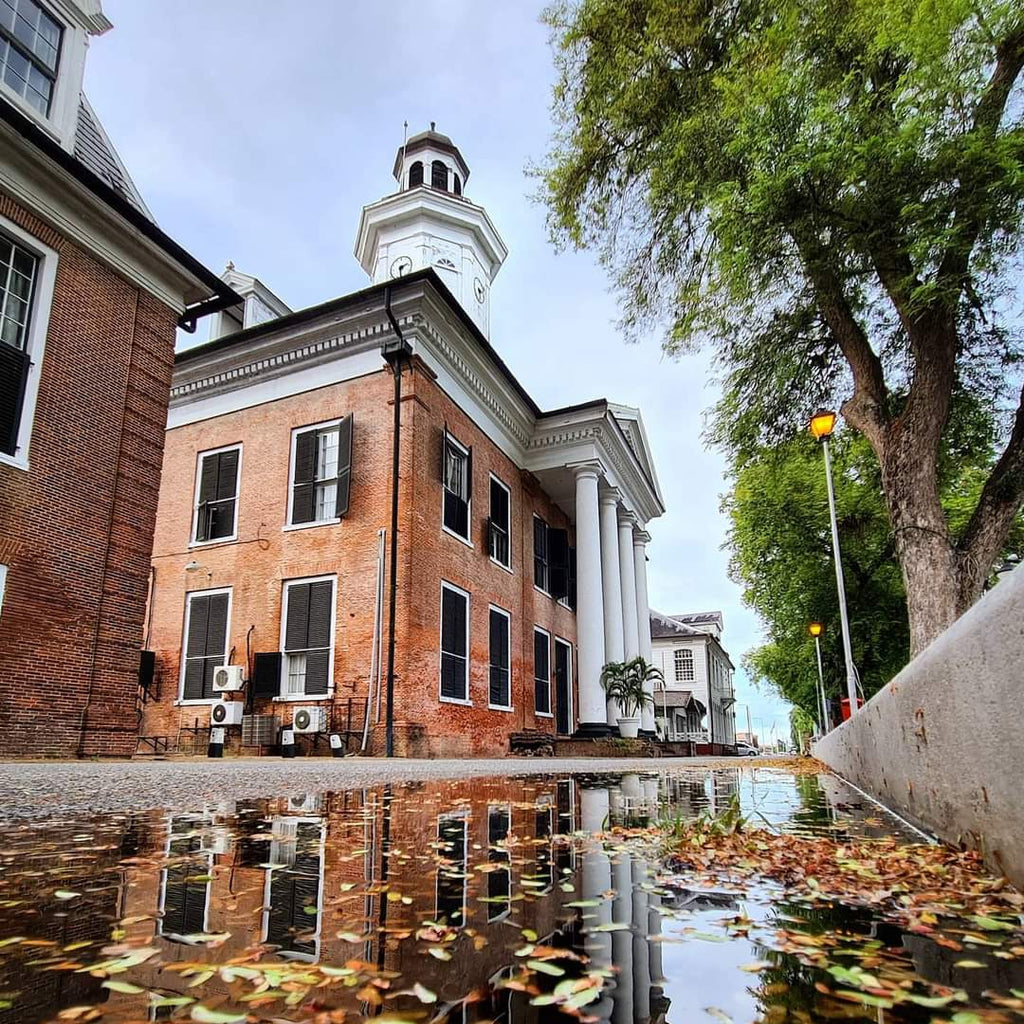Suriname, Sranan

The Republic of Suriname is located at the Northern border of South America, with Guyana to its left, French Guyana to its right and Brazil as its Southern neighbor. All natural borders of rivers and mountains.
As part of the CALA region (Caribbean and Latin America), Suriname is a Tropical Country with mostly rainy seasons.
With a population a little over 580.000 people, Suriname is best known for its Tropical Rainforest that covers about 80% of the country.
Interesting to know is out of the 10 Districts in Suriname, 7 run along the northern coast of the country which includes the capital Paramaribo.

Sipaliwini, being the biggest District, is the name given to the Tropical Rainforest that covers the rest of the country.

If you love nature, history and cultural diversity and have the chance, you should definitely visit Suriname, and here are top 10 of the reasons why:
- The Tropical Rainforest is inhabited by various Indigenous and Native Maroon tribes who live deep within the forest that borders the Amazon Basin.
Each with their own native dialects and primitive cultures, making use of and relying on the untouched nature surrounding them to provide for their communities.
A lot of villages are accessible for tourists and the local community, either by small wooden boats (de koreaal) or small plains. The villagers are very welcoming and friendly.

The village, Kwamalasamutu, is a popular one, for it near Werehpai, which is an archeological site that preserves several caves containing petroglyphs of pre-Columbian origin.

Photo credit: Reoma Tawadi
Click to get Tea from Kwamalasumutu
- Suriname pays tribute to all major ethnicities and their religious beliefs with official National Holidays catered to each.
These are (not in any specific order):
A day that pays tribute to the Indigenous and to the immigration of the Javanese/Indonesians. These two fall on the same day (Dag der Inheemsen & Dag van de Javaanse Immigratie)
A day that pays tribute to Maroons (Dag der Marrons)
Phagwa & Diwali (Native Indian)
Eid al-Fitr & Eid al-Adha (Muslim)
Chinese New Year
*A day that pays tribute to the immigration of the Chinese - Dag van de Chinese Immigratie (this day is not an Annual National Holiday, however if the community sends in an official request to Parliament to celebrate in a specific or special way it is granted).

Photo credit: Hans Ramsoedh
- Due to the various cultures in Suriname, you cannot visit the country and plainly ask for its National Dish.
The National Dish is different for each cultural group and we recommend you try them all.
Creole/Maroon: Pom & Pastei, Moksi Alesi, Afingi
Indigenous: Peprewatra & Kasripo
Native Hindu: Roti Duck or Chicken
Javanese/Indonesian: Berkat
Chinese: Tjauwmin & Nasi
And these are just the Main Ethnic Groups.

Photo credit: Melany van Ommeren
We also have:
Lebanese: Humus, Kool Mechsi, Baba Ganoush, Lacham Mishwie
Philippines: Lechon
Brazilian: Churrasco
Cuban: Moror & Tamales
And so much more…..
- Suriname is considered to have been blessed with its location, as it has never been known to be plagued with Natural Disasters such as Tsunamis, Earthquakes, Heavy Floods or Tornadoes.
There have been some rare cases over the years where the country has experienced unique phenomenon due to extreme weather patterns or conditions in nearby countries.
These were:
- A 20 Minute hail storm in 2014;
- Very light aftershocks of earthquakes in 2007, 2018 and most recently in January 2021.

Photo credit: Anouk Brauer
- Suriname has some of the most beautiful brown and white sand beaches as well as huge waterfalls and rapids that are accessible to people.
However, due to mud banks, the water from the Atlantic Ocean that flows through our rivers turns brown, mostly in the Northern part of the country.
Still a beautiful and clean sight in most areas.
If you go deep into the Tropical Rainforest of the Country you will find clear natural water flowing through the rivers, rapids and waterfalls.


Photo credit: Melany van Ommeren
- Suriname has its own currency, the Surinamese Dollar (previously Suriname Guilders), which is made up of paper money and coins.
The US Dollar and European Dollar are also used in trade; however, the Surinamese Dollar is the main currency.

Photo credit: Shutterstock
Suriname also has its own dialect called Surinaams or Sranan Tongo that is spoken a lot between all ethnic groups.
However, being a previous Dutch Colony, the main language is Dutch, which varies in dialect from that spoken in the Netherlands, Belgium and in some Caribbean Islands.
The Tourism Industry is very important to the Economic Growth of Suriname, so English is a main subject in schools and also spoken quite a bit within the community, mostly the younger generations.
Native Hindu, Javanese, Cantonese, Mandarin, Portuguese, Spanish and Filipino is also still spoken between the much older generations and immigrants.
- During the colonial era typical architect in Suriname consisted of wooden European style buildings with materials and crafts from the Indigenous and Maroon tribes.
Most of these buildings are still standing and used within the Inner City of Paramaribo.
The rich beauty and history of these buildings are the reason the Historic Inner City of Paramaribo is registered under the UNESCO World Heritage Site, categorized as protected Monuments.

Photo credit: Rafael Jantz

Photo credit: Rafael Jantz

Photo credit: Dion C. Howard

Photo credit: Shutterstock
A big part of the Tropical Rainforest in Suriname is also registered as protected land under the UNESCO World Heritage Site and called the Central Suriname Nature Reserve.

Notable for its biodiversity it is home to various wild animals such as the jaguar, giant armadillo, giant river otter, tapir, sloths, eight species of primates and 400 bird species such as harpy eagle, Guianan cock-of-the-rock, and scarlet macaw.

Photo credit: Melany van Ommeren
- The 7 Districts situated along the Northern Coast of Suriname all have rivers running through the country that serve as natural borders, with bridges to easily get from one district to the other.
The Suriname River is the border between the Capital Paramaribo and the District of Commewijne and it crossed via the Jules Wijdenbosch Bridge.
The Jules Wijdenbosch Bridge is the highest bridge, with the longest span in Suriname.

From the inner city of Paramaribo you can take a stroll alongside the Suriname River and it is also possible to take a small wooden boat (de koreaal) across the Suriname River from Paramaribo to Commewijne.

Photo credit: Rafael Jantz
- Among the people who have visited Suriname, usually from Europe, Suriname is known to have one of the friendliest communities.
As previously mentioned, due to the blending of many different cultures and ethnicities, we are more accepting of one another and this extends to foreigners.
Suriname is the only country, so far, that has a Synagogue and a Mosque build right next to each other in the inner city of Paramaribo.

Photo credit: Irvin Ngariman
- Life in Suriname is very laid back.
It is relatively easy to make a living, start a family and just enjoy life.
The Surinamese mentality differs vastly from that fast pace life in for example the Netherlands.
The majority of office businesses have working hours from 8am to 4pm.
Children go to school from 7:30am to 1pm (primary through high school) and there are evening classes for higher education usually ranging between 6pm and 9pm.
Traffic can be horrendous at times, yet everything is relatively close and very accessible.
As was mentioned before, the Tropical Rainforest is also very accessible, so weekends are usually spend in the interior.
On the other hand, what is not so easy is traveling abroad.
For Surinamese people with only a Surinamese passport it can be quite challenging to travel abroad due to the various visas and costs that come with it.
Even to Caribbean Islands, where there are no visa requirements, the costs for a plane ticket can reach quite high.
But then again that is where the beautiful Tropical Rainforest and all its rich biodiversity and locations come in.

Photo credit: Charissa Muntslag





